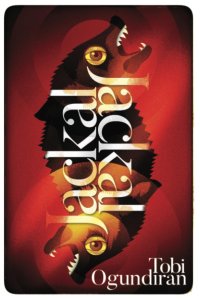Gary K. Wolfe reviews Robert Silverberg
 One of the things you quickly realize while reading Robert Silverberg’s second essay collection Musings and Meditations (the first was Reflections and Refractions back in 1997) is that there are not many people you can talk to who remember what he remembers, and fewer who remember it with such acuity, charm, and a graceful even-handedness that sometimes borders on detachment, but just as often reveals glimpses of the primordial passion that attracted Silverberg to SF in the first place – such as when he quotes the opening lines of ancient stories by Van Vogt, Poul Anderson, and even Lovecraft and remembers what it was like to read them for the first time. This lends his essays considerable value not only for his own sizeable band of followers, but for anyone interested in SF, or in the practice of writing, for that matter. Musings and Meditations collects something like six and a half dozen pieces from the mid-1990s to last year, mostly from his Asimov’s columns but with a few introductions as well, covering everything from archaeological oddities (the Antikythera device) to extinct creatures (mammoths, quaggas, trilobites) and little-remembered classic writers (like Robert Burton of Anatomy of Melancholy). Provocative as these little pieces might be, the chief attraction of the volume for most SF readers will fall into two broad areas. The first consists of several pieces on the writing craft, focusing such matters as world-building, story construction, and the familiar ‘‘show-don’t-tell’’ mantra. A good deal of what Silverberg says here isn’t entirely new, but the manner in which he relates his notions to specific examples from SF and fantasy and to the practical considerations of getting a story done is refreshingly free of aesthetic angst and should be of particular interest to young writers interested in something more useful than MFA-style self-absorption.
One of the things you quickly realize while reading Robert Silverberg’s second essay collection Musings and Meditations (the first was Reflections and Refractions back in 1997) is that there are not many people you can talk to who remember what he remembers, and fewer who remember it with such acuity, charm, and a graceful even-handedness that sometimes borders on detachment, but just as often reveals glimpses of the primordial passion that attracted Silverberg to SF in the first place – such as when he quotes the opening lines of ancient stories by Van Vogt, Poul Anderson, and even Lovecraft and remembers what it was like to read them for the first time. This lends his essays considerable value not only for his own sizeable band of followers, but for anyone interested in SF, or in the practice of writing, for that matter. Musings and Meditations collects something like six and a half dozen pieces from the mid-1990s to last year, mostly from his Asimov’s columns but with a few introductions as well, covering everything from archaeological oddities (the Antikythera device) to extinct creatures (mammoths, quaggas, trilobites) and little-remembered classic writers (like Robert Burton of Anatomy of Melancholy). Provocative as these little pieces might be, the chief attraction of the volume for most SF readers will fall into two broad areas. The first consists of several pieces on the writing craft, focusing such matters as world-building, story construction, and the familiar ‘‘show-don’t-tell’’ mantra. A good deal of what Silverberg says here isn’t entirely new, but the manner in which he relates his notions to specific examples from SF and fantasy and to the practical considerations of getting a story done is refreshingly free of aesthetic angst and should be of particular interest to young writers interested in something more useful than MFA-style self-absorption.
The second group of essays concerns SF, and also falls into two distinct kinds: historical discussions of major periods or movements, and appreciations of individual writers. When Silverberg argues that the true golden age of SF was the ’50s, when an eclectic group of new writers entered the field no longer in thrall of John W. Campbell, or when he recounts the impact of the New Wave as it made its way to America, he reminds us that ‘‘I was there’’ – in the first case as a young reader, in the second as a young author. This sort of eyewitness SF history isn’t uncommon in writers’ memoirs, but it is uncommon to see it so free of ax-grinding and score-settling, or with such specific detail (unlike most of us, if Silverberg is uncertain about how he remembers a story he can simply pull the old pulp magazine off the shelf and check it out). In discussing particular authors and stories, he can persuasively explain why the slow glass of Bob Shaw’s ‘‘Light of Other Days’’ is one of the great SF narrative inventions, or recount what it was like to discover Cordwainer Smith and wonder for years who or what he was. While there are, predictably, pieces on the usual suspects of SF history such as Wells or Dick, the most provocative often concern writers little read or discussed these days, like A. Merritt, Murray Leinster, Avram Davidson, or William Tenn. Few of these essays develop their arguments at length – though in a few cases a commentary will stretch over two or three of these short pieces – but they’re great starting places for further discussions among critics, fans, and historians, and together they weave an intricate tapestry of the field from the clear perspective of someone who’s been there, and who still cares.









Are A. Merritt, Murray Leinster, Avram Davidson, and William Tenn really “little read or discussed these days”? Leinster perhaps, as he was (“First Contact” not withstanding) generally considered one of the lesser (if prolific) lights of the era. And Tenn probably suffers from excelling at the short fiction form rather than novels (though Of Men and Monsters had many a printing). But Avram Davidson gets regular props as one of SF’s weird geniuses at a rate second only to that of R. A. Lafferty, and Merritt still has to be ranked as one of the most important fantasists between, say, William Hope Hodgson and J.R.R. Tolkien. Are they really less read than (to grab a few random examples from contemporaneous eras) Henry Kuttner, C. L. Moore, Frederic Brown, C. M. Kornbuth, or Leigh Brackett. None would rank among truly neglected writers like Thomas Burnett Swann, Mark Clifton or Daniel F. Galouye.
Try finding books by Tenn, Davidson or Lafferty at your local bookstore (and I don’t mean used bookstore). Just try. Good luck.
Well, how many of us who love old SF (and by old, I mean anything from the the 40’s through the 70’s) are silly enough to rely on the local bookstore? With the exception of a half dozen big names, damn near everyone from that era is long out of print. But thanks to the internet (and especially abebooks), there has actually never been a better time to acquire and read those “neglected” books and authors. (heck, even the “big” old names aren’t that well represented at the locak bookstore. I’m baffled by the Heinlein selection in the big chains, for instance – it’s almost all his late, windy, ossified stuff as opposed to the early/mid work that made him so vital and influential. Why is that?)